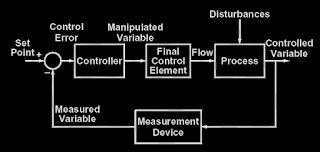Di bawah matahari sore yang menggantung rendah, sinarnya terpantul samar di permukaan logam hitam pekat dari sesuatu yang mengerikan, raksasa, dan nyaris mustahil: setengah dari struktur bola raksasa sudah menjulang di tengah kebun bunga mawar yang dulu damai—kini berubah jadi pangkalan militer mini. Permukaan bola itu berkilau seperti obsidian, penuh paku-paku antena dan menara senjata yang bergerak perlahan, seolah sedang mengintai burung gereja dan tetangga yang terlalu usil.
Istriku berdiri di ambang pintu dapur, wajahnya pucat seperti kain linen yang tergantung di tali jemuran. Ia menoleh padaku, mata terbuka lebar, dan berkata dengan suara tercekat,
“Honey… anak kita—Dr. Pyrite—dia… dia sedang membangun Death Star di kebun. Haruskah kita khawatir?”
Aku hanya tersenyum pelan, menghirup kopi pagi dengan damai seperti seorang senator galaksi yang sudah menyerah pada nasib. Kulirik ke luar jendela, melihat sosok mungil putri kami—berjaket lab putih, kacamata pelindung, dan rambutnya dikepang rapi, tengah mengelas bagian bawah turbolaser sambil berdendang lagu tema imperial yang entah darimana dia dapat.
“Sayang…” ujarku pelan, penuh keyakinan.
“Dia sedang membawa perdamaian, kebebasan, keadilan, dan keamanan untuk empire barunya. Dan, untuk world order yang dia rancang sendiri.”
Di saat itu, angin sepoi membawa aroma ozon terbakar dan bensin. Sebuah droid probe hitam mengambang pelan dari arah taman, meluncur masuk jendela dan menatapku dengan kamera merah menyala. Ia memindai wajahku sebentar, mengangguk pelan, dan berkata dengan suara monoton:
"Confirmed: Parental Compliance at 93%. Threat Level: Passive. Imperial Authorization: Approved."
Istriku mundur satu langkah.
Aku meletakkan cangkir kopi.
“Dia hanya anak yang bersemangat, Dear. Jangan khawatir.”
Di kejauhan, menara laser mulai berputar. Sebuah proyeksi holografik raksasa dari wajah Pyrite—anak kami, si jenius gila—muncul di atas rumah, menyampaikan pidato pertamanya sebagai Empress of the Back Garden.
“Warga rumah!”
katanya, suaranya bergema melalui pengeras suara buatan sendiri.
“Hari ini adalah awal dari tatanan baru. Tidak akan ada lagi rebutan remote. Tidak akan ada lagi sayur wajib di meja makan. Kami akan menggantinya dengan struktur—dengan dominasi—dan dengan cookies sepuasnya.”
Sorak-sorai terdengar dari para droid yang berjajar rapi di jalur taman. Seekor kucing tetangga yang penasaran meloncat ke atas panel surya dan langsung disambut dengan perlindungan medan gaya transparan.
Istriku akhirnya duduk.
“Tuhan… dia serius.”
“Dia selalu serius,”
kataku.
“Sejak dia pasang AI ke dalam toaster dan menyuruhnya mengintrogasi roti gosong.”
Kami hanya bisa pasrah saat langit berubah warna. Sebuah cahaya kehijauan menyala samar dari tengah bola raksasa yang nyaris selesai.
Putri kami—Dr. Pyrite, PhD di usia 12, master rekayasa senjata orbit dan otoritas tertinggi di antara robot pembersih debu—melangkah masuk rumah sambil membawa blueprint dan segelas susu coklat.
“Ayah, Ibu…”
katanya polos.
“Aku butuh akses ke rekening kalian. Target pertama: rumah Pak RT. Dia tidak mengizinkan parabola.”
Aku dan istriku saling pandang. Lalu aku mengangguk pelan.
“Untuk Empire, ya, Nak.”
“Untuk Empire.”
Death Star in the Garden
Under the low-hanging afternoon sun, its light shimmered faintly on the dark metallic surface of something terrifying, massive, and nearly impossible: half of a giant spherical structure already towered in the middle of the rose garden—once peaceful, now transformed into a mini military outpost. Its surface gleamed like obsidian, covered in antenna spikes and weapon towers that moved slowly, as if scanning sparrows and overly nosy neighbors.
My wife stood at the kitchen doorway, her face pale like linen hung on the clothesline. She turned to me, eyes wide, and spoke in a choking voice:
“Honey… our daughter—Dr. Pyrite—she… she's building a Death Star in the garden. Should we be worried?”
I merely smiled, calmly sipping my morning coffee like a galactic senator who had surrendered to fate. I glanced out the window and saw our tiny daughter—lab coat on, safety goggles strapped, her hair neatly braided—welding the base of a turbolaser while humming the Imperial theme she somehow picked up.
“Dear…” I said softly, with conviction.
“She’s bringing peace, freedom, justice, and security to her new empire. And to the world order she designed herself.”
Just then, a gentle breeze carried the scent of burnt ozone and gasoline. A black probe droid hovered in from the garden, drifted through the window, and stared at me with a glowing red camera. It scanned my face for a moment, nodded slightly, and said in a monotone voice:
“Confirmed: Parental Compliance at 93%. Threat Level: Passive. Imperial Authorization: Approved.”
My wife took a step back.
I set down my coffee cup.
“She’s just an enthusiastic child, dear. Don’t worry.”
In the distance, the laser tower began to rotate. A massive holographic projection of Pyrite’s face—our child, the brilliant lunatic—appeared above the house, delivering her first speech as Empress of the Back Garden.
“Citizens of this household!”
she declared, her voice booming from homemade speakers.
“Today marks the dawn of a new order. There shall be no more fighting over the TV remote. No more mandatory vegetables at dinner. We shall replace them with structure—with dominance—and with unlimited cookies.”
Cheers erupted from the droids lined up along the garden path. A curious neighbor's cat leapt onto the solar panel, only to be greeted by a transparent energy shield.
My wife finally sat down.
“God… she’s serious.”
“She’s always serious,”
I replied.
“Ever since she installed AI in the toaster and told it to interrogate burnt toast.”
We could only watch as the sky shifted colors. A soft green glow emerged from the center of the nearly completed sphere.
Our daughter—Dr. Pyrite, PhD at age 12, master of orbital weaponry and supreme authority over robotic vacuum cleaners—walked into the house carrying blueprints and a glass of chocolate milk.
“Mom, Dad…”
she said innocently.
“I need access to your bank accounts. First target: Mr. Neighborhood Leader’s house. He didn’t allow my satellite dish.”
My wife and I exchanged glances. Then I nodded gently.
“For the Empire, sweetheart.”
“For the Empire.”




